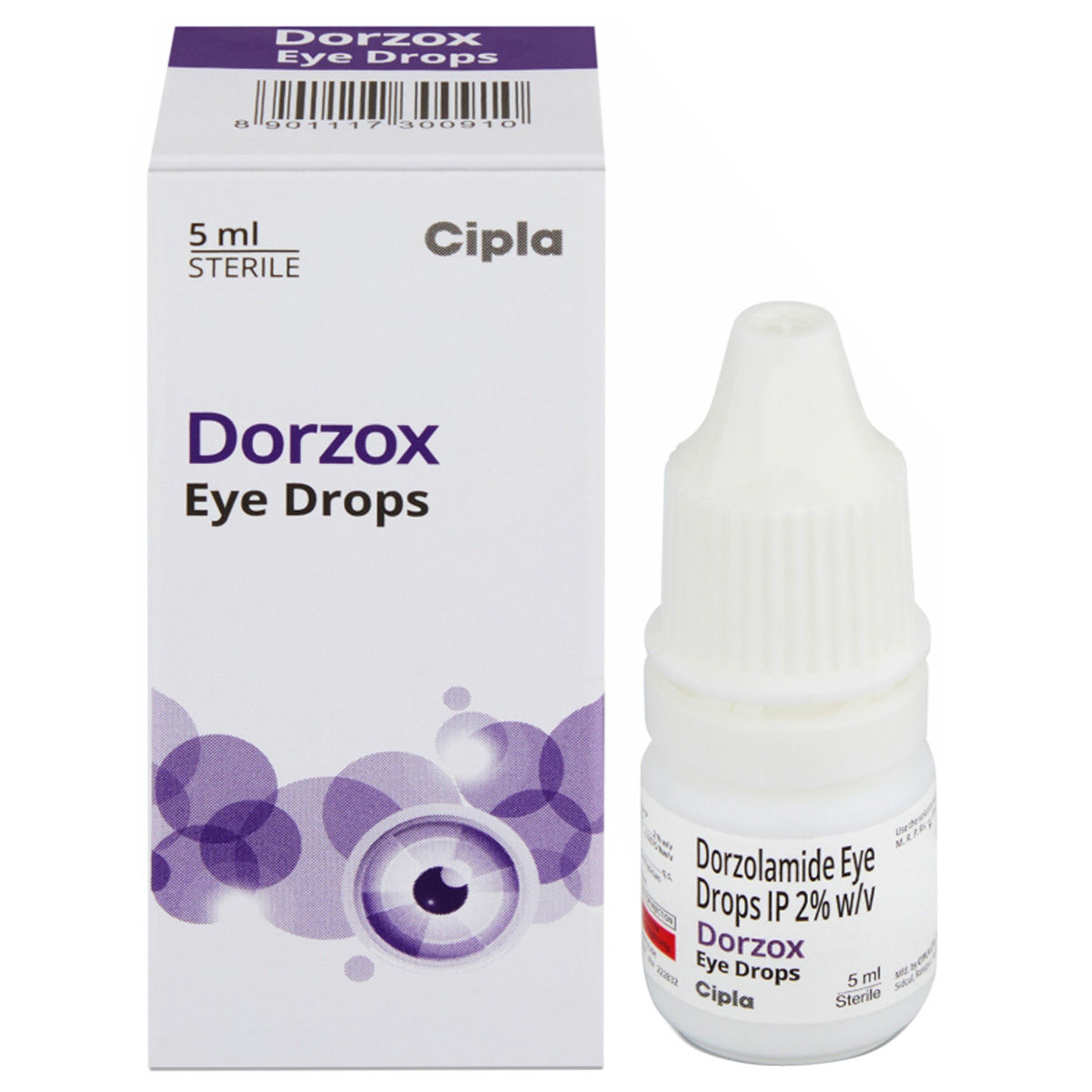Dorzolamide
About Dorzolamide
Dorzolamide is used to treat increased pressure in the eye. It helps to prevent the gradual loss of vision or eyesight by lowering the increased pressure in the eyes. Glaucoma is an eye problem in which the optic nerve is damaged, thereby leading to increased eye pressure, and if left untreated, it can lead to permanent blindness.
Dorzolamide contains Dorzolamide, a carbonic anhydrase inhibitor. It works by lowering the pressure in the eye. Dorzolamide should be put only in the infected eye, and contact with the normal eye should be avoided.
Dorzolamide is for external use only. Before using it, break the seal and wash your hands to avoid infection. If you wear contact lenses, remove them before using Dorzolamide, and you can put them back 15 minutes after using Dorzolamide. You may sometimes experience blurred vision, a burning sensation, and a bitter taste in the mouth. Most of these side effects of Dorzolamide are temporary, do not require medical attention, and gradually resolve over time. However, if the side effects are persistent, reach out to your doctor.
Put Dorzolamide in your eyes only if the doctor has prescribed it to you. Never encourage self-medication or suggest your medicine to someone else. You should not stop taking Dorzolamide abruptly as it may increase eye pressure. Do not take the Dorzolamide if you are allergic to sulphonamides or have a severe kidney problem. Check with your doctor before starting Dorzolamide if you have dry eyes, cornea problems, or liver disease. Also, Dorzolamide does not stop Dorzolamide abruptly, as it may lead to severe side effects. Do not take any other eye medication with Dorzolamide without consulting your doctor.
Uses of Dorzolamide
Medicinal Benefits
Dorzolamide contains Dorzolamide, which is a carbonic anhydrase inhibitor. It is primarily used to treat the high pressure in the eye. It works by reducing the production of aqueous humour (fluid in the eye) and reducing eye pressure. Dorzolamide should be put only in the infected eye, and contact with the normal eye should be avoided.
Directions for Use
Storage
Side Effects of Dorzolamide
- Blurred vision
- Burning sensation
- Bitter taste in the mouth
Drug Warnings
Do not take Dorzolamide if you are allergic to dorzolamide, other antibiotics, or sulfa drugs. Inform your doctor about all the prescription and non-prescription medications you are taking, especially eye medications, products that contain aspirin, and vitamins. If you have a kidney, dry eye, cornea, or liver problem, are pregnant or breastfeeding, inform your doctor before starting Dorzolamide as a dose adjustment may be required. If you are taking any other eye medication, please tell your doctor prior. If you wear contact lenses, remove them before using Dorzolamide, and you can put them back 15 minutes after using Dorzolamide. Wash your hands properly before using Dorzolamide to avoid any infection.
Drug Interactions
Drug-drug interactions: Dorzolamide may interact with blood thinners (aspirin), other glaucoma medications (acetazolamide), muscle weakness medication (dichlorphenamide), anti-epileptic medication (topiramate), analgesics (sodium salicylate).
Drug-Food Interactions: Dorzolamide interacts with non-prescription medications, vitamins, nutritional supplements, and herbal products you are taking or plan to take.
Drug-Disease Interactions: Inform your doctor if you have or ever had liver or kidney disease, dry eyes, urinary obstruction, porphyria (liver disorder), hypersensitivity reactions, cornea problems.
Drug-Drug Interactions Checker List:
Safety Advice

Alcohol
cautionAlcohol is not known to cause any unpleasant side effects if taken along with Dorzolamide. But intake of alcohol with Dorzolamide may damage your liver. So intake of Dorzolamide should be avoided with Dorzolamide.

Pregnancy
cautionDorzolamide is a pregnancy Category C medicine. It may affect pregnant women or foetus. Hence, intake of Dorzolamide should be avoided if you are pregnant or planning to become pregnant as it may harm the baby.

Breast Feeding
cautionDorzolamide is excreted in human milk. But the amount of Dorzolamide absorbed by the nursing infant is unknown. So, should not be taken while breastfeeding.

Driving
unsafeDorzolamide can affect alertness and coordination. So, operating machinery which requires concentration should be avoided.

Liver
cautionDorzolamide to be taken with caution, especially if you have a history of Liver diseases/conditions. The dose may have to be adjusted by your doctor.

Kidney
cautionDorzolamide to be taken with caution, especially if you have a history of Kidney diseases/conditions. The dose may have to be adjusted by your doctor.

Children
safe if prescribedDorzolamide can be given to children but under child specialist medical supervision. Dorzolamide is prescribed to the children to treat complicated urinary tract infections, anthrax infection, or plague infection.
Habit Forming
Diet & Lifestyle Advise
Avoid alcoholic beverages with Dorzolamide as they can make you dehydrated and affect the eye pressure.
Including heart-healthy omega-3 fatty acid-containing food drinks in your daily diet. You can also use low-fat cooking oil like olive oil, soybean oil, canola oil, and coconut oil.
A diet including green and leafy vegetables, and fruits, helps to lower eye pressure.
Regular moderate exercise and appropriate rest are important.
Fruits and vegetables which contain Vitamin A and C help to improve vision and recover from the disease.
Special Advise
Visit an optician regularly to monitor your eye pressure.
Patients Concern
Disease/Condition Glossary
Glaucoma: It is an eye disease in which the optic nerve is damaged. This damaged nerve leads to an increase in eye pressure abnormally. If not treated, it can lead to loss of vision. It is a major cause of blindness in people who are above the age of 60 years.
FAQs
Dorzolamide is used to treat increased pressure in the eye. It helps to prevent the gradual loss of vision or eyesight by lowering the increased pressure in the eyes.
Dorzolamide contains Dorzolamide, a carbonic anhydrase inhibitor. It works by lowering the pressure in the eye. As a result, it effectively treats glaucoma.
If you miss a dose of Dorzolamide, take the missed dose as soon as you remember it. However, if it's almost time for the next dose, do not take a double dose to make up for a missed one.
Do not stop taking Dorzolamide without talking to your doctor. If you suddenly stop taking Dorzolamide, you may experience increased eye pressure. It can also lead to loss of sight. Your doctor will probably decrease your dose gradually depending upon your disease condition.
You should inform your doctor if you are undergoing dental surgery, and he might stop the use of Dorzolamide before the surgery.
No, Dorzolamide should be taken in the dose and duration as advised by the doctor. If you take it in more than the recommended dose, it might cause unpleasant side effects. If you think your symptoms are not improving, please consult your doctor.
Dorzolamide contains Dorzolamide, a carbonic anhydrase inhibitor. It works by lowering the pressure in the eye. As a result, it effectively treats glaucoma.
The peak effect of dorzolamide occurs about two hours after administration. The effects last for at least eight hours. However, the effects may not be immediately visible.
No, you should not refrigerate Dorzolamide. Instead, you should store it at room temperature in a closed container, away from heat, moisture, and direct light. You should also keep it out of reach of children.
Remove your contact lenses before instilling dorzolamide eye drops and put them back in at least 15 minutes later.
Common side effects of Dorzolamide may include stinging, burning, or discomfort in the eye after inserting the drops, bitter taste after inserting the drops, sensitivity to light, upset stomach, and vomiting.
Dorzolamide is intended to control glaucoma but does not cure it.
In rare cases, Dorzolamide may cause serious side effects such as itching eyes, redness or swelling of the eyes, watery eyes, dryness, or a skin rash. If you experience these symptoms, stop using dorzolamide eye drops and consult your doctor immediately.
Dorzolamide can affect alertness and coordination. So, operating machinery, driving a car, or riding a bike, which requires concentration, should be avoided.
Dorzolamide contains Dorzolamide, a carbonic anhydrase inhibitor.
Dorzolamide is for ophthalmic (eye) use only. Wash your hands before and after use. Lie down and tilt your head backwards. Pull your lower eyelid gently with your index finger to form a pocket. Instil the number of drops advised by the doctor into the pocket of the lower eyelid. Close your eyes for 1-2 minutes.








